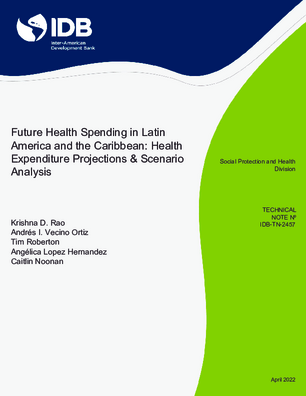Future Health Spending in Latin America and the Caribbean: Health Expenditure Projections & Scenario Analysis
Date
Apr 2022
Latin American and Caribbean countries will face significant increases in future health expenditures. A variety of factors are responsible - population growth and aging, the epidemiological transition to noncommunicable diseases (NCDs), and economic growth and technology, among others. Increasing health expenditures are particularly concerning to countries in Latin America and the Caribbean (LAC) given growing levels of debt, insufficient fiscal revenues, and high out-of-pocket payments. The projected average annual per capita CHE growth rate from 2018-2050 is slightly higher in Latin American countries (3.2%) than in the Caribbean (2.4%). The share of health expenditure in GDP is projected to increase to 2030 in all LAC countries except for Guyana. The effect of demographics and epidemiology on health spending growth are more modest. Among strategies to control NCD risk factors, a focus on hypertension control generally had the strongest effect on restraining CHE growth except in countries where smoking is particularly prevalent. The main driver of health expenditure growth is economic growth and technology, demonstrating the importance of adopting policies such as explicit prioritization systems and benefit plans that establish common rules for payers and providers that encourage cost-effective decisions. The underlying model for making projections and analyzing alternative scenarios is publicly available.




